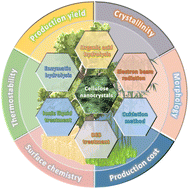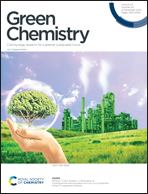Sustainable preparation of cellulose nanocrystals: state of the art and perspectives
Abstract
As sustainable and advanced nanomaterials, cellulose nanocrystals (CNCs) attract extensive attention from both academia and industry due to their superior physical and chemical properties. Strong inorganic acid (e.g., H2SO4) hydrolysis is the most common method for the preparation of CNCs because of its high efficiency. However, inorganic acid hydrolysis faces several limitations such as severe equipment corrosion, over-degradation of cellulose, pollution of the environment, and the use of a large amount of water. This review comprehensively summarizes sustainable strategies invented in recent years for the preparation of CNCs, including the oxidation method, ionic liquid treatment, deep eutectic solvent treatment, enzymatic hydrolysis, inorganic solid acid hydrolysis, organic acid hydrolysis, supercritical water hydrolysis, HCl vapor/gas hydrolysis, and the electron beam radiation method. It is believed that CNCs, as green and renewable nanomaterials, have broad application prospects in the future, and the realization of the green, low-cost, and sustainable preparation of CNCs will be the prerequisite guarantee for the large-scale application of CNCs.

- This article is part of the themed collection: Green Chemistry Reviews


 Please wait while we load your content...
Please wait while we load your content...